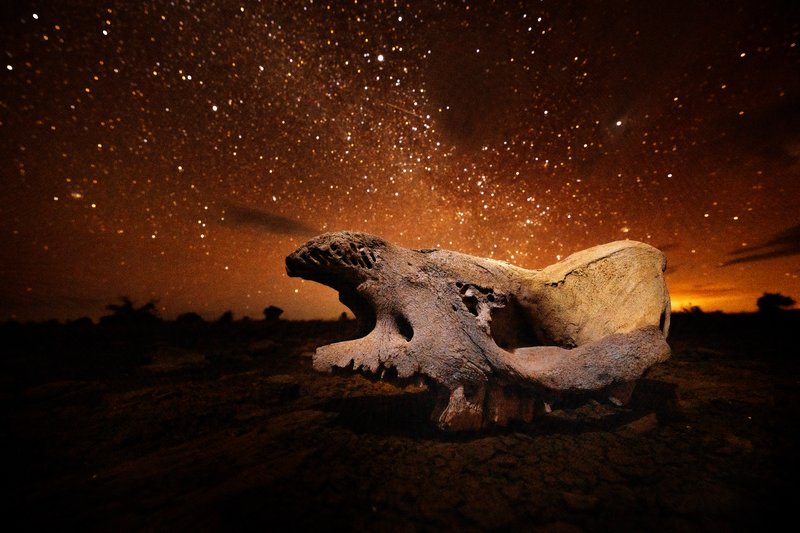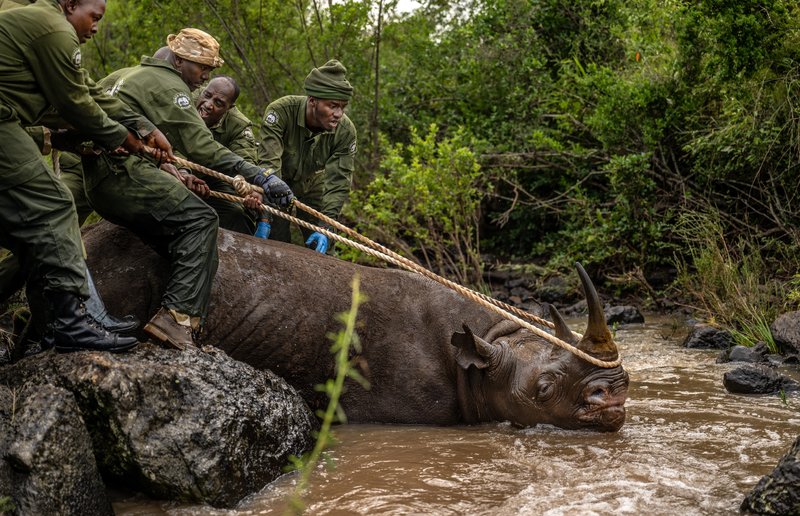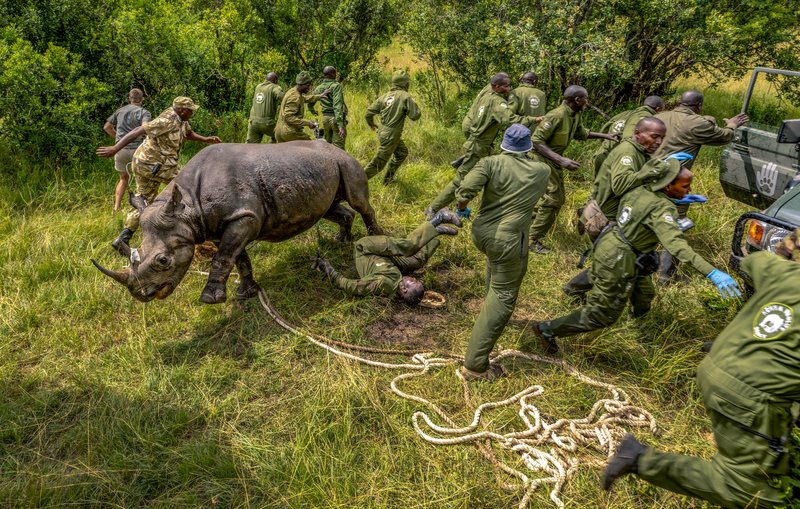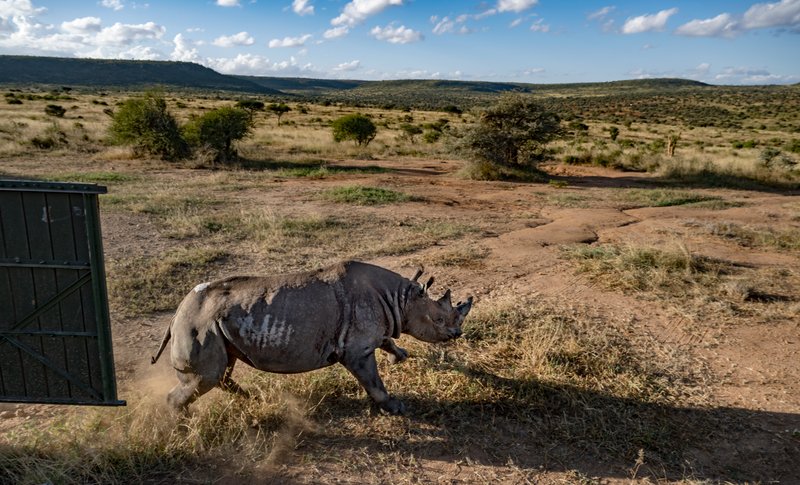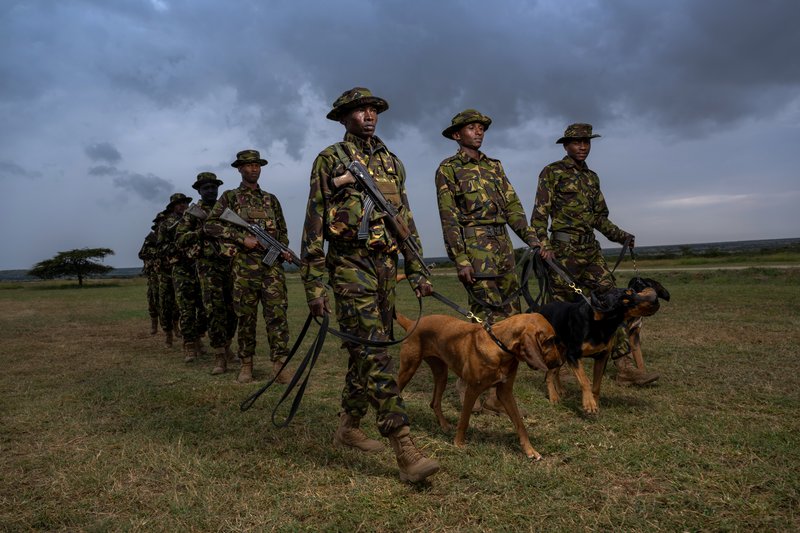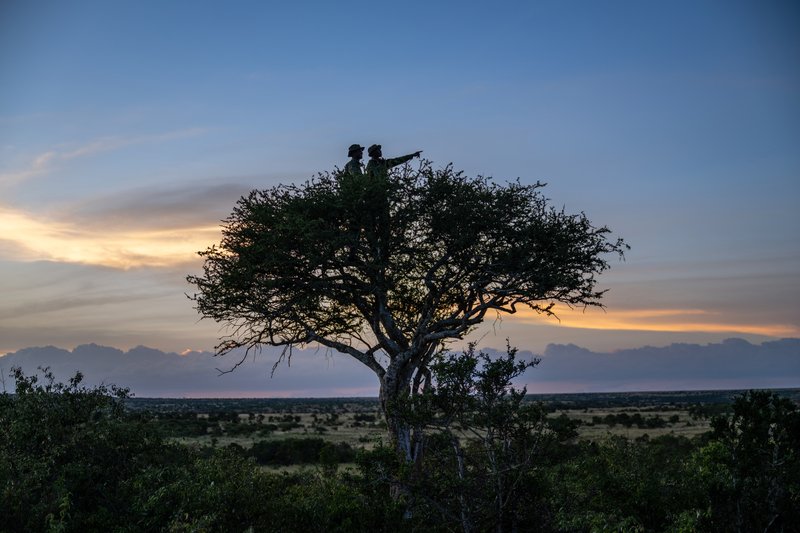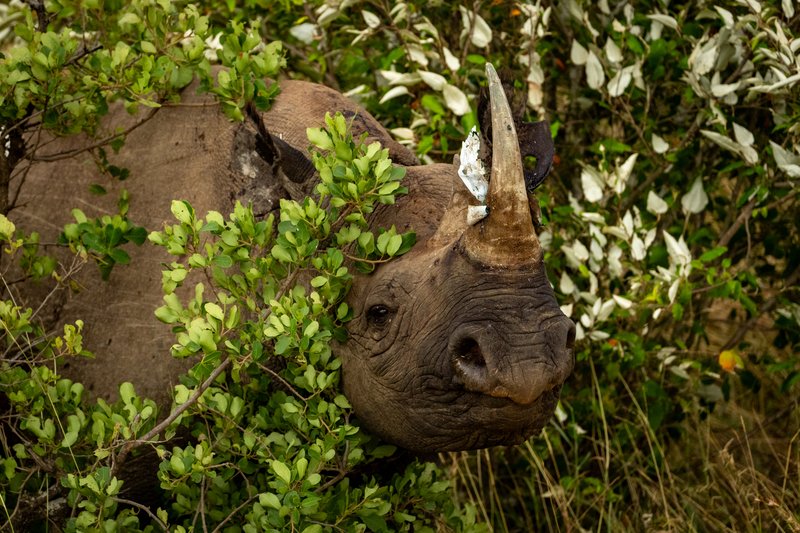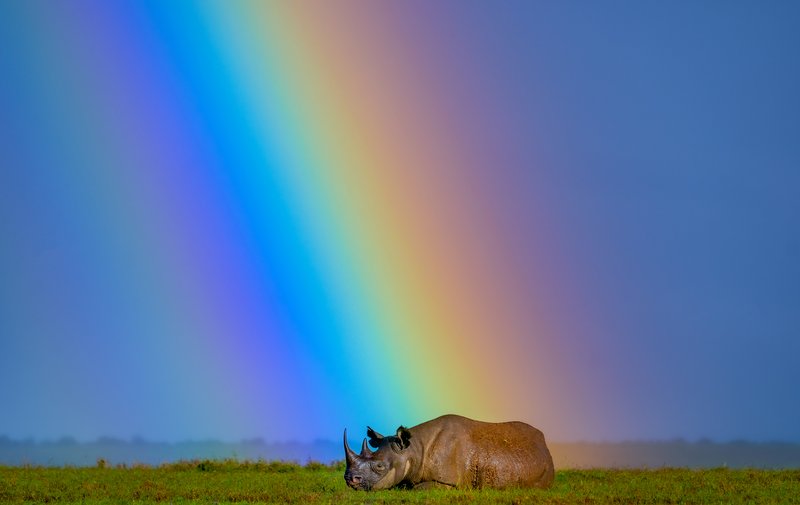First Place: Kenya's Black Rhino Revival
Kenya's Black Rhino Revival
A rhino named Ushindi is darted by Dr. Matthew Mutinda from helicopter. 21 black rhinos were translocated to Loisaba after being poached to local extinction for the past 50 years. This expansion of their habitat and growing population is a testament to Kenya’s conservation efforts. In a monumental effort to restore and revive the population of black rhinos in Loisaba Conservancy, Kenya, a team from the Kenya Wildlife Service undertook the challenging task of translocating 21 black rhinos to this expansive sanctuary. Among these rhinos was Ushindi, a remarkable creature whose name fittingly translates to "victory" in Swahili. The process of moving these massive animals is fraught with challenges. The operation began with Kenya Wildlife Service veterinarian Dr. Matthew Mutinda skillfully darting Ushindi from a helicopter. This method is employed to safely and effectively sedate the rhino, thereby minimizing stress and risk during the translocation process. Given their size, strength, and temperament, handling rhinos requires meticulous planning and coordination among wildlife professionals. The decision to relocate these rhinos stems from a dire need: black rhinos had been poached to local extinction in the region over the past 50 years. At the root of this crisis lies the high demand for rhino horn, which has been valued more than gold in some illegal markets. This insatiable demand led to ruthless poaching operations that decimated rhino populations across Africa, pushing species like the black rhino to the brink. By reintroducing rhinos back into the ecosystem at Loisaba, conservationists aim to not only boost population numbers but also restore ecological balance.
Ami Vitale
